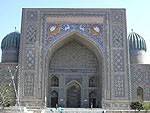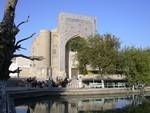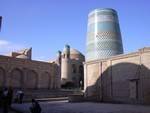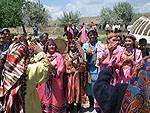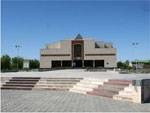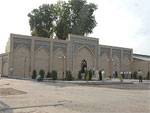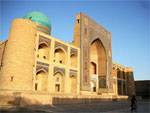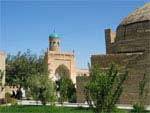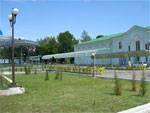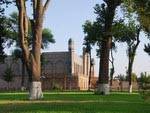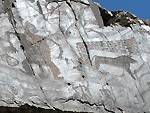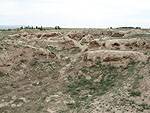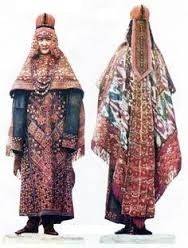Pearl of East: Your travel guide in Uzbekistan.
|
Main Menu
Tashkent
Samarkand
Bukhara
Khiva
Baysun
Nukus
Margilan
Ferghana
Nurata
Namangan
Kokand
Sarmysh Say
Termez
|
News / НовостиUzbekistan: Charm of folklore arts09/02/2015 15:46 As the President Islam Karimov pointed out Karakalpak people are distinctive with their ancient history, unique customs and traditions, language and culture that constantly attract the attention of the world community thanks to the depth of content, vivid images, national spirit and philosophy. Ethnographic peculiarity of the nation can be observed almost in everything: in everyday life, clothes, musics and so on. The unique ethnographic image of the nation is reflected in its living places - houses which has been passed from centuries to centuries. Karakalpak yurt is notable for its cone-type shape, structure of shanaraka, large number of carpet-woven decorations: kyzylbaskur, akbaskur, zhanbau etc. Today, such items of national applied arts and culture form the expositions of the national museums. Republican Museum of local history, State Art Museum named after Savitsky and Berdakh National Museum are indeed considered as storehouses of national culture. The exhibits of these museums - the main tourist attractions of the country - draw the attention of world community. Nowadays, exhibited samples of national clothings are considered to be the model for the revival of the material culture and traditions that people have began to forget. Such elements of an ancient clothing as «kiymeshek», which is a unique type of women's headdress, with embroidered chest part, attract an attention of an audience a great deal. Kyzyl-kiymeshek was worn by young women, and ak-kimeshek by older ones.
«Kok-koylek», which is unique with its peculiar system of ornament «sauyty nagys», was regarded as a traditional wedding and festive dress. Women's hats called «saukele» and «tobelik» were mystiques findings for historians and, according to ethnographers, resemble the helmets of ancient amazon-massagets whose echo is believed to be the epic «Kyryk-kiz». Saukele is covered with red cloth and richly decorated with patterned metal buckles and pendants, colored stones and beads. Tobelik was worn over saukele. It should be noted that Karakalpak embroidery on red, black and white backgrounds is done with a looped-chain-stitch or the cross. Whereas, blue background is initially involves only cross-stitch. Gold or silver threads are not used while creating Karakalpak ornaments. On the contrary, used an established colour palette od seven colours: red, yellow, green, blue, white, black, and brown. Karakalpak men’s traditional headdress is a “shogirme” – a hat made of sheepskin (other names – “kurash”, “boric”). A special place in the museum exhibitions is dedicated to jewellery art of the people of Karakalpakstan, where the differences between schools of jewellery arts can clearly be seen. The set of jewellery of Karakalpak young women include: earrings, pectorals and other. In the ancient times girls used to wear earrings called “silsilely” or “halkaly” – earrings with pendants under the chin. A pectoral called “haykel” includes many figures silver ornaments with coloured stones, small chains, and pendants. «Ongirmonshak» - a hemispherical shaped pectoral with hanging jingling pendants, is also one of the unique female dress jewelleries. «Arebek» - a subtle golden ring, attracts great deal of interests. Karakalpak songs and dance culture awaken tumultuous emotions during festivals and national holidays in Tashkent and other cities of the republic. Karakalpak music is represented by both folk and professional genres. Epic genre - «telling tales», also known as «djirau», «baksi», and «kyssakhany», holds a central place. Of these, «djirau» is the most ancient one, in whose repertoire included such heroic epics as «Alpamys», «Edige», «Koblan» and others. Djirau is distinguished by the style of throat singing, and is accompanied by stringed-bowed instrument - kobyz. Epics of love-lyrical character («Asik Garip», «Sayathan-Hamra», «Yusuf-Ahmed») are performed by «baksi» with the accompaniment of a musical instrument called «dutar». «Kyssahanys» read the manuscripts of epics. They sing the lyrics with open voice without instrumental accompaniment. Speaking of the hospitality of Karakalpak people, it is impossible not to mention the traditional dishes, the main of which is «besbarmak» (or in karakalpaki «gurtik»). |
Calendar
Weather
Useful Links
Searching for Airways and Hotels
|

